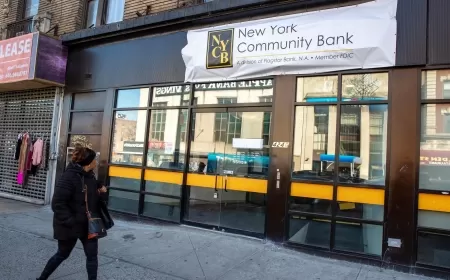Will Trump’s Deportation Plan Lower Housing Costs? What You Need to Know
Trump’s deportation plan claims to reduce housing costs, but experts warn it could have unintended effects. Learn how immigration and labor shortages impact home prices.

President-elect Donald Trump has suggested that mass deportations of immigrants could help solve the U.S. housing crisis by easing the strain on an already tight housing market. According to Trump, millions of immigrants are flooding the country, causing more competition for homes and driving up prices, making housing unaffordable for many Americans. While this idea may sound simple, housing experts say the reality is much more complicated.
How Immigration Affects Housing Demand
It’s true that as the population grows—whether through immigration or birth—more people need homes, which can lead to higher demand and, in turn, higher prices for both rental properties and homes for sale. However, experts note that immigrants are not just a source of demand; they also contribute to increasing the housing supply. A large portion of the U.S. construction workforce is made up of immigrants, particularly in residential construction, where labor demand is high and entry barriers are low.
Immigrant Labor and the Housing Supply
Research shows that immigrants make up around 30% to 40% of construction workers in states like California and Texas, where housing markets are booming. They help build the homes that are needed to meet rising demand. If deportations were to reduce the number of immigrant workers in construction, experts warn that this could slow down homebuilding projects and drive up construction costs.
Jim Tobin, president of the National Association of Home Builders (NAHB), explained that fewer workers in construction could lead to delays in homebuilding and, ultimately, higher prices for consumers. Without enough workers to build homes, developers would likely face higher costs that would be passed down to homebuyers and renters.
Immigrants and Affordable Housing
Many immigrant workers in construction are living in low-cost neighborhoods far from their job sites, and often share housing with others to make ends meet. Duewight García, an immigrant from Honduras who works in construction in New York, lives in a shelter after his apartment was damaged in a fire. He says he came to the U.S. to work and contribute to the economy, but he’s worried about how deportation policies will affect his ability to stay and continue his work.
The Housing Crisis: Bigger Than Immigration
While immigration is one factor contributing to the rising demand for housing, it is far from the only cause of the housing crisis in the U.S. The housing shortage has been building for years, driven by several other factors. For example, after the 2008 financial crisis, homebuilding slowed dramatically. In addition, zoning laws in many cities limit the ability to build new homes, and more people—especially millennials—are now entering their prime years for homebuying, which further strains the market.
When the COVID-19 pandemic hit, the Federal Reserve lowered interest rates to near-zero levels, making mortgages more affordable and causing many people to rush into the housing market. As a result, home prices and rents began climbing steeply. Immigration increases to the U.S. were not a major factor until 2022 and 2023.
Could Deportations Lower Housing Costs?
Trump’s plan to deport millions of immigrants with the aim of reducing housing demand is controversial. While it’s possible that fewer immigrants would reduce the immediate need for housing in some areas, experts warn that it could backfire in the long run. The loss of immigrant labor in the construction industry could reduce the number of new homes being built, worsening the housing shortage and increasing home prices.
In fact, research has shown that previous crackdowns on immigration led to fewer building permits and less new construction. A study of the Obama administration’s Secure Communities program found that, in counties with higher deportation rates, the number of new homes built dropped significantly. The current deportation plan under Trump could have an even more sweeping impact, leading to further delays and higher construction costs.
Trump’s Other Housing Policy Ideas
Aside from deportation, Trump has proposed other ideas to address the housing crisis, including deregulation and opening up federal lands for development. These policies aim to reduce barriers to new construction and provide more opportunities to build homes. These ideas have received more support from the housing industry because they could increase the supply of affordable housing without the negative side effects of deportation.
Conclusion: A More Complex Issue
The connection between immigration and housing costs is not as straightforward as it may seem. While reducing immigration could potentially reduce housing demand in some areas, it could also harm the housing supply by taking away much-needed labor in the construction industry. Experts agree that any solution to the housing crisis must consider the broader set of factors at play, including labor shortages, zoning laws, and rising construction costs.
Ultimately, addressing the housing crisis requires a comprehensive approach that looks beyond immigration alone. The housing market needs more homes, and that requires a balanced approach to both immigration and construction policy.
Also Read: US Homebuyers Get Creative to Secure Lower Mortgage Rates Despite Rising Costs





























































